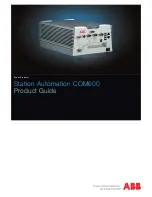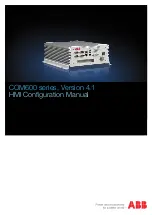
A
CCESS
G
ATEWAY
376
Protocol
A standard process consisting of a set of rules and conditions that regulates data transmissions between computing
devices. Some examples of protocols include HTTP (HyperText Transfer Protocol), FTP (File Transfer Protocol),
TCP/IP (Transmission Control Protocol/Internet Protocol), and POP (Post Office Protocol). All these protocols are
responsible for regulating the transmission of their specific data file types.
QoS
(Quality of Service) A collective measure of the level of service delivered to the customer. QoS can be characterized by
several basic performance criteria, including availability (low downtime), error performance, response time and
throughput, lost calls or transmissions due to network congestion, connection set-up time, and the speed of fault
detection and correction. Service providers may guarantee a particular level of QoS (defined by a service level
agreement) to their subscribers. QoS-enabled hardware and software solutions sort and classify IP packet requests into
different traffic classes and allocate the proper resources to direct traffic based on various criteria, including application
type, user or application ID, source or destination IP address, time of day, and other user-specified variables. See also,
CoS
and
ToS
.
RADIUS
(Remote Authentication Dial-In User Service) An authentication and accounting system used by many Internet Service
Providers (ISPs). When you dial in to the
ISP
you must enter your username and password. This information is passed
to a RADIUS server which checks that the information is correct and then authorizes access to the ISP system.
RFC
(Request for Comments) A series of notes about the Internet, started in 1969 (when the Internet was the ARPANET).
An RFC note can be submitted by anyone. Each RFC is designated by an RFC number. Once published, an RFC never
changes. Any modifications to an original RFC are assigned a new RFC number.
Roaming
In wireless networking, roaming refers to the ability to move from one
AP
coverage area to another without
interruption in service or loss in connectivity.
Round Robin Queuing
An algorithm that services each queue in a predefined sequence. For example, it might empty 1,500 bytes apiece from
queue 1 (high priority), queue 2 (medium priority), and queue 3 (low priority), servicing each in turn.
Router
A hardware device that connects two or more networks and routes the incoming data packets to the appropriate
network.
RTS (Length)
(Request to Send) A packet sent when a computer has data to transmit. The computer will wait for a CTS (Clear To
Send) message before sending data. The RTS Length value should remain at its default setting unless you encounter
inconsistent data flow. Only minor modifications to this value are recommended
SLIP
(Serial Line Internet Protocol) SLIP is a standard protocol for connecting to the Internet with a modem over a phone
line. It has trouble with noisy dial-up lines and other error-prone connections, so look to higher-level protocols like
PPP for error correction.
SMTP
(Simple Mail Transfer Protocol) A standard protocol that regulates how e-mail is distributed over the Internet. See also,
Protocol
.
Summary of Contents for Access Gateway
Page 1: ......
Page 12: ...ACCESS GATEWAY xii ...
Page 51: ...ACCESS GATEWAY Introduction 39 ...
Page 84: ...ACCESS GATEWAY 72 Installing the Access Gateway ...
Page 90: ...ACCESS GATEWAY 78 Installing the Access Gateway ...
Page 95: ...ACCESS GATEWAY System Administration 83 ...
Page 96: ...ACCESS GATEWAY 84 System Administration ...
Page 146: ...ACCESS GATEWAY 134 System Administration ...
Page 161: ...ACCESS GATEWAY System Administration 149 ...
Page 185: ...ACCESS GATEWAY System Administration 173 ...
Page 205: ...ACCESS GATEWAY System Administration 193 The Network Interfaces screen appears ...
Page 310: ...ACCESS GATEWAY 298 The Subscriber Interface ...
Page 376: ...This page intentionally left blank ACCESS GATEWAY 364 Troubleshooting ...
Page 378: ...This page intentionally left blank ACCESS GATEWAY 366 ...





































